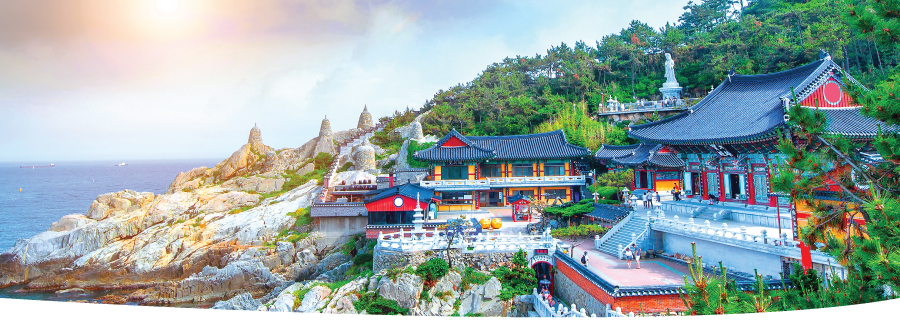
Share this itinerary with your clients via email.

South Korea Essentials:
Seoul, Busan, & Jeju Island
Seoul, Busan, & Jeju Island
See the best of South Korea, a rapidly modernizing country that cherishes its historic traditions. Explore the high-tech megacity of Seoul, experiencing its cutting-edge ambience while visiting its ornate palaces that serve as symbols of Koreas legacy. Then head for the energetic coastal city of Busan where culture, art, seafood, and nightlife abound. Finally, end the trip in the sub-tropical paradise of Jeju Island, one of South Koreas most picturesque destinations with sandy beaches, imposing volcanoes, rolling hills, unique cuisine, and plenty of adventures.
ACCOMMODATIONS
•3 Nights Seoul
•3 Nights Busan
•3 Nights Jeju Island
INCLUSIONS
•Private Arrival & Departure
Transfers Per City
Transfers Per City
•Private Historical Seoul Tour
•Private Discover Busan Tour
•Private Discover Busan Tour
•Private Jeju Island Tour
•Daily Breakfast
•Daily Breakfast
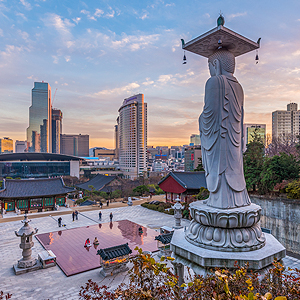
Arrive Seoul:
Arrive in Seoul via the Seoul Airport, meet your driver and take a private transfer to your hotel. After checking-in, the rest of the day is at your leisure.
(Accommodations, Seoul)
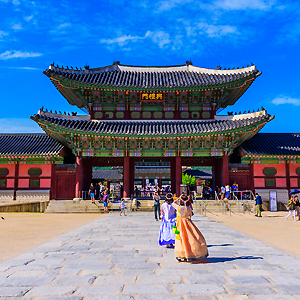
Seoul:
After breakfast, meet with your private guide and driver for an extensive tour of Seoul!
Your tour of Seoul begins with pickup at your and then you will head to the Gyeongbokgung Palace, originally built in the 14th-century and located in the northern part of Seoul. It is the largest palace of the Five Grand Palaces of the Joseon Dynasty. - and often considered the most beautiful.
Continue to Bukchon Hanok Village, home to hundreds of traditional houses, called hanok, that date back to the Joseon Dynasty. Operating essentially as a well-preserved historic village and open-air museum, this village allows visitors to immerse themselves in Koreas past. After Bukchon Hanok Village, You will move on to the Gilsangsa Temple. Although the temple has a relatively short history, it is conveniently located in the heart of Seoul. The temple serves as a downtown cultural space by offering a variety of Buddhist programs.
Heading south you will visit the Insa-dong neighborhood, which has been situated at the heart of the nation's capital for over 600 years and was at the center of culture during the Joseon Dynasty. Over forty percent of the nation's antique stores are clustered in the Insa-dong area, and they sell more valuable antiques compared to any other places in Korea. Among the antiques sold there are old pictures, pottery, hand-made wooden containers, and jewelry.
The Gwangjang Market is the nation's first market and continues to thrive as a popular tourist destination today. The second floor of the market provides all of your silk, satin, and linen bed-sheet stores, while the main floor is renowned for its food stalls. It is a genuine market eating experience with ajummas (Korean ladies) selling mungbean pancakes, often served with alcoholic drinks such as soju or makkeolli, and mayak gimbap, a dish similar to Japanese rolled sushi.
Finally you'll head to the Han River, where you'll board a ferry for a river cruise. The cruise follows the river which flows through the city and offers spectacular views of the metropolis and its tourist spots such as the Jeoldusan Park, the 63 City Building, N Seoul Tower, Jamsil's Multi Sports Complex, and so much more.
After the river cruise ends, the rest of the evening is at your leisure.
(Breakfast & Accommodations, Seoul)
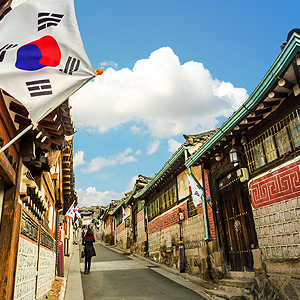
Seoul:
Today is at your leisure, for you to explore Seoul as you wish or to take one of our optional tours. We recommend:
Shared DMZ Tour with Private Guide:
Before visiting the Demilitarized Zone that separates North Korea from South Korea, be sure to bring your passport as it is required for military clearance and must be presented upon arrival. Also note that everyone must follow the DMZ dress code:
•Jeans are allowed to be worn as long as they are clean and not faded, ripped, or torn in any way.
•No shorts or skirts.
•No shirts or tops without sleeves or exposing the midriff.
•No sandals, flip flops, or opened toed shoes.
•No athletic, military, or over-sized clothing.
•Jackets and outerwear must be worn, not carried.
Meet your private, English-speaking guide at your hotel and travel north to the Korean Demilitarized Zone (DMZ), where you will board a shared coach with your guide for the remainder of the tour. The DMZ is the worlds most heavily fortified border and one of the surviving remnants of the Cold War. Drive alongside the DMZ on Freedom Road which stretches down the banks of the Imjin River. Make a stop at Imjingak Park to see the artillery that was used during the Korean War before continuing to the Unification Bridge, a symbolic bridge built in 1998.
Next, visit the Exhibition Hall to see more documents and artifacts pertaining to this conflict before uncovering the 3rd Infiltration Tunnel, a tunnel that runs beneath the border of North and South Korea discovered in 1978 that neither side will take credit for.
Afterwards, head to the Dora Observatory to see the DMZ from above with telephoto lenses. From here you will be able to see the village of Kijongdong on the North Korean side, North Korean military personnel, and panoramic views of the landscape.
End the tour with one of the three following options:
Option 1: War Memorial of Korea
Once the headquarters of the South Korean army, this museum dedicated to the memory of those who served in the Korean War houses approximately 33,000 artifacts with about 10,000 on display at indoor and outdoor exhibitions, making it one of the largest museums of its kind in the world.
Option 2: Paju Premium Outlet
Koreas largest premium outlet mall, shop amongst the over 250 stores featuring international and Korean brands. Family-friendly amenities are present, including a cinema, a kid-friendly train, and other facilities. Enjoy the low-price shopping in the shadow of the beautiful Simhaksan Mountain nearby.
Option 3: Heyri Art Village
This artistic community is full of inspiration, with the artists works proudly showcased throughout the quaint village. There are over 500 hundred artists who live here with 50 eclectic galleries, museums, cafes and restaurants that support them. Everything in the village was meticulously designed to allow natural vistas of the surrounding landscape, allowing visitors to find inspiration in both art and nature.
(Breakfast & Accommodations, Seoul)
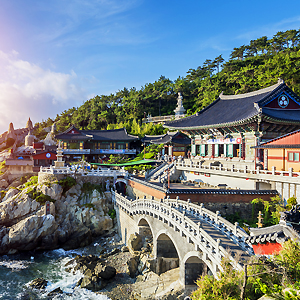
Seoul to Busan:
After breakfast, check-out of your hotel and take a private transfer from your Seoul Hotel to either the airport or to the train station (flight/train not included). After your journey to Busan, meet your private arrival transfer who will take you to your hotel in Busan. After checking-in, the rest of the day is at your leisure.
(Breakfast, Seoul; Accommodations, Busan)
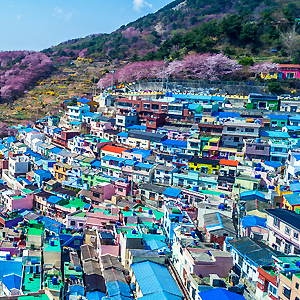
Busan:
After breakfast, you will be picked up at your hotel by your guide and escorted to the UN Memorial Cemetery, established in 1951 to honor the fallen soldiers who gave their lives in the Korean War.
Next, head for the Gamcheon Culture Village, an iconic part of Busan known for its houses painted in shining shades of blue. Formed by houses built in staircase-fashion on the foothills of a coastal mountain, this village has earned the nickname of Machu Picchu of Busan. The many alleys cutting through this community are vibrantly decorated with murals and sculptures created by the residents.
Continue on to Taejongdae. This coastal park is classic Busan and is especially famous for its magnificent cliff face. The highest peak of these cliffs is at 820 feet and there are dense pine forests that cover the area. Fun fact - in 2006, 155 dinosaur footprint fossils were found here!
Next, visit Gukje Market. Formed in the aftermath of the Korean War, Gukje Market has served countless customers over 60 years and is one of Korea's largest markets. Gukje is a labyrinth of alleyways crowded with stalls holding a variety of goods.
The last stop will be Jagalchi Fish Market, Korea's largest seafood market where you can eat fresh raw fish. This market is a perfect representation of Busans love affair with seafood and is famous throughout the country.
(Breakfast & Accommodations, Busan)
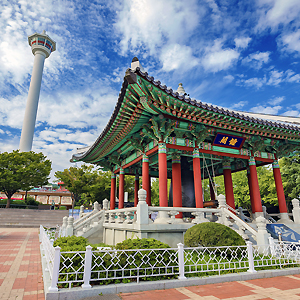
Busan:
Today is at your leisure, for you to explore the beachside metropolis of Busan as you wish or to take one of our optional tours. We recommend:
Private Fish Cake Making Experience:
As a coastal city, Busan is famous for its fresh seafood. One of its most famous dishes is eomuk, a fish cake made of crushed fish meat that is cooked or fried and then molded into its shape. Eomuks are a versatile food, used in hot pots, soups, stir-fries, or simply deep-fried and eaten as a snack. Visit the Samjin Fish Cake Company, founded in 1953, is the oldest eomuk maker in Busan. On a tour of their recently renovated factory, you will learn about the different offerings of eomuk they produce, the history of the dish, and have the chance to make eomuks for yourself!
After the tour, the rest of the day is at your leisure.
(Breakfast & Accommodations, Busan)
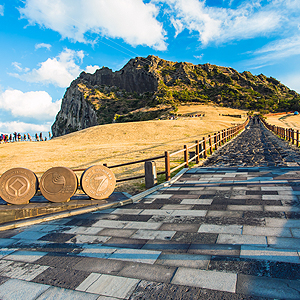
Busan to Jeju Island:
After breakfast, check-out of your hotel and meet your driver for a private transfer to the airport for your flight from Busan to Jeju Island (flight not included). Having arrived on Jeju Island, meet another driver for a private transfer to your hotel.
(Breakfast, Busan; Accommodations, Jeju Island)
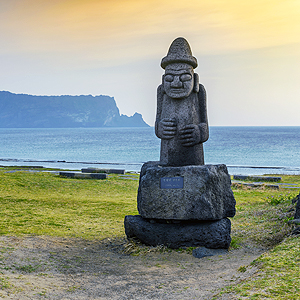
Jeju Island:
After breakfast, meet your guide and driver for today as you embark on a tour of Jeju Island.
Start the day's tour with a visit to Manjanggul Lava Tube, one of the world's finest lava tunnels and a UNESCO Natural Heritage Site. Manjanggul Cave has a variety of interesting structures inside, including 27 inch lava stalagmites and the lava tube tunnels themselves. The cave is one of the finest lava tunnels in the world and is designated a natural monument.
Afterwards, visit the Jeju Haenyeo Museum, established to introduce the unique activities and culture of Jejudo's haenyeo female divers. The Jeju Haenyeo Museum showcases various exhibits of haenyeo female divers and their activities, who are a symbol of Jeju Island’s pioneering spirit. The Haenyeo women served as the backbone of Jejus early economy, seaweed, abalone, or other shellfish from the sea.
The tour continues to Seongsan Ilchulbong Peak. This mountain rose from under the sea in a volcanic eruption over 100,000 years ago. Located on the eastern end of Jeju Island, there is a huge crater at the top of Seongsan Ilchulbong Peak. The crater is about 2000 feet in diameter and 300 feet high. With the 99 sharp rocks surrounding the crater, it appears like a gigantic crown from above.
Next is Seopjikoji, located at the end of the eastern shore of Jeju Island. Seopji is the old name for the area, and koji is the Jeju dialect meaning a sudden bump on land. On Koji hill, which is wide and flat, there stands a stone bongsudae, a stone tower used as a communications system for 500 years to notify the central government of urgent military information. Additionally, this scenic and historic area was the filming site of several Korean TV dramas.
Finally, finish the tour by heading to Seongup Folk Village, where Korea's traditional thatched houses, Confucian temple, mill, fortress, and tombstones have been preserved. Here, you'll also hear Jeju folk songs and other folk entertainment, sample local food and hear the local Jeju dialect.
Return to your hotel where the rest of the day is at your leisure.
(Breakfast & Accommodations, Jeju Island)
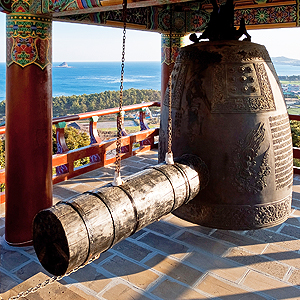
Jeju Island:
Today is at your leisure, for you to explore and relax on Jeju Island as you wish or to take one of our optional tours. We recommend:
Private Jeju Highlights Tour:
Meet your private driver and guide for a tour of Jejus natural and cultural highlights. Start with a hike through the sub-tropical landscape on route to the picturesque Cheonjiyeon Waterfall, which translates to Gods Pond. Next, travel to the coast to view the volcanic cliffs known as Jusangjeolli. These volcanic pillars are one of Jeju Islands most recognizable monuments, formed when the lava of the nearby Hallasan Mountain met the sea, creating these hexagon-shaped columns that would make a mason jealous.
Next, visit the Yeomiji Botanic Garden, one of Koreas best botanical gardens. Due to the islands unique climate, the indoor garden contains approximately 2,000 rare tropical and subtropical plants. Additionally, there is a Jeju Native Garden, a classic Korean Garden, a Japanese Garden, an Italian Garden, and a French Garden on the grounds.
Finally, visit the O sulloc Museum to learn about Koreas traditional tea culture. The O in O sulloc means to appreciate and enjoy - so drink up! At this museum you will have the opportunity to taste test various teas from around the world while relaxing alongside the pond and indoor garden. See how green tea leaves are traditionally roasted and brewed, observe workers harvest green tea from the nearby fields, and be sure to take some tea back for the trip home!
After the tour ends your driver will return you to your hotel, where the rest of the dy is at your leisure.
(Breakfast & Accommodations, Jeju Island)

Depart:
After breakfast, check-out of your hotel and meet your private driver for a transfer to the Jeju Airport where it is onward to your next Avanti Destination or to prepare for the return trip home.
(Breakfast, Jeju Island)

